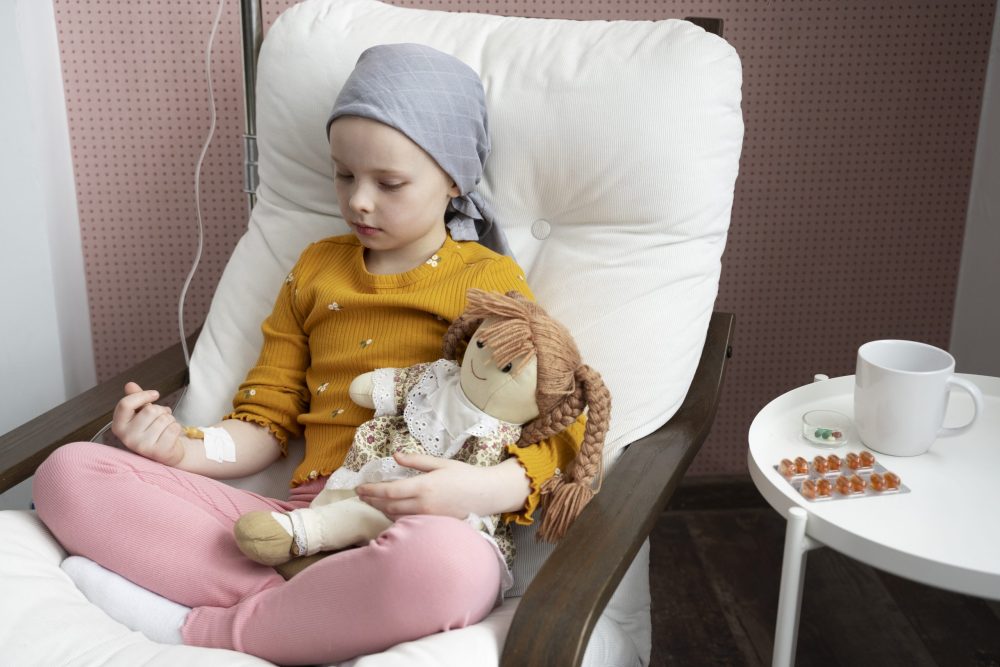Children and young people waiting longer than necessary for cancer diagnosis, study finds

Young people suffering from certain types of cancer, such as bone tumours, are experiencing lengthy times to diagnosis, new research has found.
Childhood cancer has been declared a global disease burden, with early diagnosis a priority.
The aim of this study was to help researchers understand the journey that children and young people experience from the start of their symptoms until they receive their cancer diagnosis.
To do this, the team of researchers collected the data of 1,957 children and young people (aged 0-18 years) diagnosed with cancer between September 2020 and March 2023.
The research was led by Dr Shaarna Shanmugavadivel, Professor Shalini Ojha and Professor David Walker from the School of Medicine at the University of Nottingham.
Dr Shanmugavadivel said: “For the first time, we understand the current landscape of childhood cancer diagnosis in the UK.
“We can celebrate that ethnicity, sex and socioeconomic status have no impact on time to diagnosis, but there is an urgent need to focus efforts on young people and tumour types such as bone tumours that are still experiencing lengthy intervals.
“Earliest possible diagnosis is key as time is crucial.
“Untreated, tumours grow bigger and can spread around the body, requiring more extensive surgery and more intensive therapies to offer cure.”
The study found that the total time to diagnosis from first symptom to confirmed diagnosis varied widely from the same day to several years.
The median time to diagnosis was 4.6 weeks, but this varied by age and cancer type.
Teenagers (15-18 years) experienced the longest median time to diagnosis (8.7 weeks), whereas infants under one year had the shortest (3.7 weeks).
Among cancer types, bone tumours had the longest median diagnostic interval (12.6 weeks), while kidney tumours had the shortest (2.3 weeks).
Importantly, the study found that factors such as sex, ethnicity, and socioeconomic status did not influence the time to diagnosis.
The researchers also studied the routes to diagnosis, including the number of healthcare visits before a confirmed diagnosis.
Most children and young people (74 per cent) had between one and three medical visits before being diagnosed, and two-thirds (67 per cent) were diagnosed in an emergency setting.
The majority first consulted a GP or an emergency doctor.
Some cancer types, including Langerhans Cell Histiocytosis (LCH), bone tumours, soft tissue tumours, and brain tumours, were associated with a higher number of medical visits before diagnosis.
This data highlights that, whilst access to diagnosis is equal across different demographic groups, some children and young people, particularly teenagers and those with certain types of cancer, experience longer times to diagnosis.
Dr Shanmugavadivel said: “The findings will help focus efforts towards closing the gap for these groups, ensuring more children and young people receive a diagnosis sooner.
“The results will feed into the Child Cancer Smart campaign led by CCLG: The Children & Young People’s Cancer Association, which aims to promote earlier diagnosis, through awareness and education of the public and healthcare professionals.”
Ashley Ball-Gamble, CEO of CCLG and co-author on the study, said: “Childhood cancer knows no boundaries – it affects children and young people of all ages, backgrounds, and walks of life.
“However, our research has revealed important differences in how long diagnosis takes.
“It’s crucial that we understand why certain groups, such as older teenagers, or those with certain cancers, such as bone and brain tumours, are likely to face a lengthier diagnosis.
“By recognising these differences, we hope to work towards faster diagnoses and improved survival rates.”






